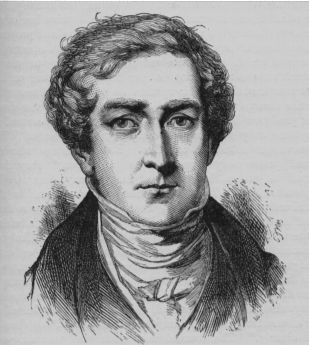
October 30, 2014, by Harry Cocks
Robert Peel in Caricature
Say the word ‘caricature’ today in Britain and the chances are that you’ll have memories of the merciless lampooning of politicians by Spitting Image in the 1980s and 1990s or think of the prodigious output of leading political cartoonists such as Steve Bell in The Guardian, Richard Gaunt writes. These are the inheritors of a long and distinguished tradition of visual satire which has been poking fun at the foibles of the British people and the excesses of their political elite since the master craftsmen of the ‘golden age of caricature’, William Hogarth and James Gillray, pioneered the art form in the late-eighteenth and early-nineteenth century. Yet, though their work has, in many respects, defined our modern conception of political caricature, there were a host of less famous but no less influential artists working in this medium through the early-nineteenth century.
As Nottingham History’s authority on Sir Robert Peel, (see also blog March 26 2014) I tackle the case of one such forgotten artist – the Anglo-Irishman John Doyle (1797-1868) – in my latest book, Peel in Caricature. The ‘Political Sketches’ of John Doyle (‘H.B.’). The book, which reproduces 150 hand-coloured caricatures by Doyle from the collection of The Peel Society of Tamworth, contains introductory essays by me and my Nottingham colleague Fintan Cullen (Professor of Art History). Doyle, who worked under the pseudonym of ‘H.B.’ (the monogram with which he signed his sketches) pioneered the new artistic medium of lithography. His Political Sketches, which appeared in batches of two or three a month through the parliamentary season, were published serially (Numbers 1-917) from 1829-1851. Though Doyle’s style was less ‘hard-edged’ than the copper-plate etchings of Gillray and George Cruikshank, I argue that his immense popularity amongst the caricature-buying public of London indicates an importance which has been unduly neglected. Contemporaries marvelled at ‘H.B.’s lifelike representation of the leading political personalities of his day, and of Peel in particular. Peel also assumes significance, because it was to Peel, in 1841-2, that Doyle revealed his identity as ‘H.B.’. I explore the reasons for this in a lengthy historical essay on Doyle’s life and work, which also comments on his relationship to Arthur Conan Doyle (his grandson). Though the British Museum has a large collection of Doyle’s sketches, and the preliminary drawings and character sketches for them, this is the first book to discuss Doyle’s life and work in any depth. In his contribution to the volume, Fintan Cullen focuses on Doyle’s characteristic use of visual parody to subvert high art for satirical purposes. Doyle would take new artistic compositions such as Landseer’s ‘A Stag at Bay’ and turn them to comic purpose by making contemporary politicians (including Peel) fit the principal roles. Doyle’s style and tone thus suggests an elite, metropolitan audience but, much as with Gillray decades before, leading parliamentarians clamoured to be ‘noticed’ by ‘H.B.’ as a sign that they had arrived on the political scene.
The book, which is reproduced in full colour, was assisted by a publication grant from the AHRC-funded ‘Connected Communities’ programme at Nottingham. At its launch at the House of Lords, in October, Peel’s biographer Lord Hurd acclaimed it as ‘an excellent production’.
http://www.tamworthherald.co.uk/Peel-s-life-drawn-pages-history/story-22874093-detail/story.html

Great article. Reminds me of both ‘The Cartoon Museum’ where original Spitting Image puppets can be seen, as well as ‘Hogarth’s House’ — the original home of where the great man once lived. Both museums of which are based in London. Well worth a look if you’re ever in town.